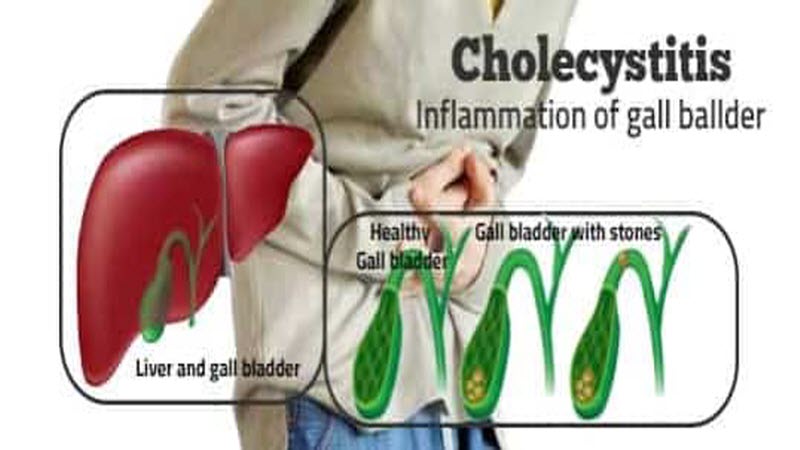Tests and Diagnosis for Cholecystitis
Tests and procedures used to diagnose cholecystitis include:
- Blood tests: Your doctor may order blood tests to look for signs of an infection or signs of gallbladder problems.
- Imaging tests that show your gallbladder: Imaging tests, such as abdominal ultrasound or a computerized tomography (CT) scan, can be used to create pictures of your gallbladder that may reveal signs of cholecystitis.
- A scan that shows the movement of bile through your body: A hepatobiliary iminodiacetic acid (HIDA) scan tracks the production and flow of bile from your liver to your small intestine and shows blockage. A HIDA scan involves injecting a radioactive dye into your body, which binds to the bile-producing cells so that it can be seen as it travels with the bile through the bile ducts.
Treatment and Drugs for Cholecystitis
Treatment for cholecystitis usually involves a hospital stay to stabilize the gallbladder inflammation and possible surgery.
Hospitalization
If you’re diagnosed with cholecystitis, you’ll likely be hospitalized. Your doctor will work to control your signs and symptoms and to control the inflammation in your gallbladder. Treatments may include:
- Fasting: You may not be allowed to eat or drink at first in order to take stress off your inflamed gallbladder. So that you don’t become dehydrated, you may receive fluids through a vein in your arm.
- Antibiotics to fight infection: If your gallbladder is infected, your doctor likely will recommend antibiotics.
- Pain medications: These can help control pain until the inflammation in your gallbladder is relieved.
Your symptoms are likely to subside in a day or two.
Surgery to remove the gallbladder
Because cholecystitis frequently recurs, most people with the condition eventually require gallbladder removal surgery (cholecystectomy). The timing of surgery will depend on the severity of your symptoms and your overall risk of problems during and after surgery. If you’re at low surgical risk, you may have surgery within 48 hours or during your hospital stay.
Cholecystectomy is most commonly performed using a tiny video camera mounted at the end of a flexible tube. This allows your surgeon to see inside your abdomen and to use special surgical tools to remove the gallbladder (laparoscopic cholecystectomy). The tools and camera are inserted through four incisions in your abdomen, and the surgeon watches a monitor during surgery to guide the tools. An open procedure, in which a long incision is made in your abdomen, is rarely required.
A less invasive way to remove gallbladders is under study. Known as natural orifice transluminal endoscopic surgery (NOTES), the procedure is intended to lessen scarring and discomfort. While laparaoscopic cholecystectomy remains the standard of care for gallbladder removal, NOTES is being performed in a few centers worldwide and may eventually be an important alternative.
Once your gallbladder is removed, bile flows directly from your liver into your small intestine, rather than being stored in your gallbladder. You don’t need your gallbladder to live normally.



